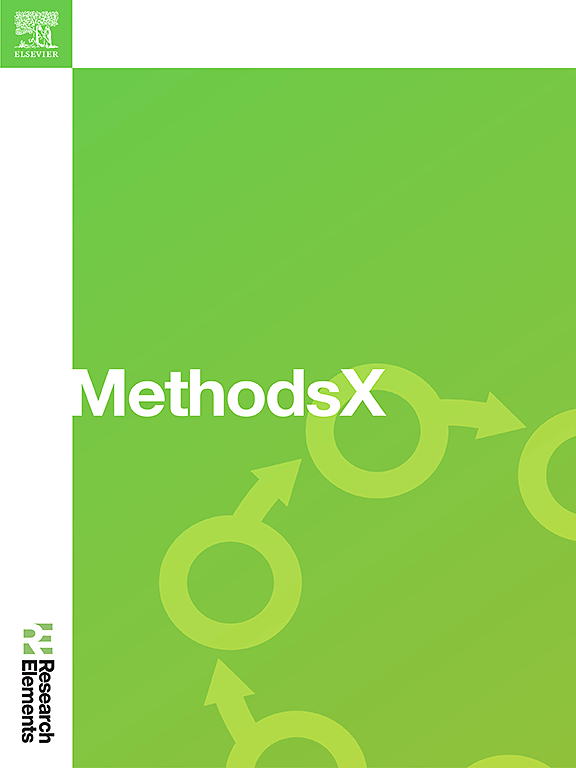从使用铝管和不锈钢容器收集的抓取采样器收集的未受干扰的顶部沉积物的准确采样,用于浅海和深海应用
IF 1.6
Q2 MULTIDISCIPLINARY SCIENCES
引用次数: 0
摘要
本研究描述了一种沉积物采样方案,使用木下式抓取(K-grab)沉积物采样器收集和分析海洋沉积物中的微塑料(<;5毫米)和宏观塑料(>;5毫米)。在GB24地质调查巡航期间,在20-800米深度收集了133个地表沉积物样本。K-grab配备了头部滑动称重机构,提高了不同沉积物类型的采样效率。对于微塑料,不锈钢容器和j形铝管最大限度地减少污染,同时保持样品的完整性。使用5毫米网分离宏观塑料并在船上进行分析。方法验证证实了污染最小的高空间分辨率采样。这些结果表明,K-grab是一种可靠的微塑性和宏观塑性分析工具,为海洋沉积物中的塑料污染提供了有价值的数据。•本研究描述了一种沉积物取样方案,使用抓取取样器收集和分析海洋沉积物中的微塑料(<;5毫米)和宏观塑料(>;5毫米)。•在调查期间,从20-800米深处收集了133个地表沉积物样本,微塑料使用j形铝管和不锈钢容器处理,以尽量减少污染,同时保持样本的完整性。使用5毫米的筛网分离宏观塑料,并在船上进行分析。方法验证证实了污染最小的高空间分辨率采样。本文章由计算机程序翻译,如有差异,请以英文原文为准。

Accurate sampling of undisturbed top sediment from grab sampler collected using aluminum tube and stainless-steel containers for shallow and deep-sea applications
This study describes a sediment sampling protocol using a Kinoshita-type grab (K-grab) sediment sampler to collect and analyze microplastics (<5 mm) and macroplastics (>5 mm) in marine sediments. During the GB24 geological survey cruise aboard the Bosei-maru, 133 surface sediment samples were collected from depths of 20–800 m. The K-grab, equipped with a head-slide weight mechanism, enhanced sampling efficiency across various sediment types. For microplastics, stainless steel containers and J-shaped aluminum tubes minimized contamination while maintaining sample integrity. Macroplastics were separated using a 5 mm mesh and analyzed on board. Method verification confirmed high-spatial-resolution sampling with minimal contamination. These results demonstrate that the K-grab is a reliable tool for microplastic and macroplastic analysis, providing valuable data on plastic pollution in marine sediments.
- •This study describes a sediment sampling protocol using a grab sampler to collect and analyze microplastics (<5 mm) and macroplastics (>5 mm) in marine sediments.
- •During the survey, 133 surface sediment samples were collected from depths of 20–800 m, with microplastics handled using J-shaped aluminum tubes and stainless steel containers to minimize contamination while maintaining sample integrity.
- •Macroplastics were separated using a 5 mm mesh and analyzed on board. Method verification confirmed high-spatial-resolution sampling with minimal contamination.
求助全文
通过发布文献求助,成功后即可免费获取论文全文。
去求助
来源期刊

MethodsX
Health Professions-Medical Laboratory Technology
CiteScore
3.60
自引率
5.30%
发文量
314
审稿时长
7 weeks
期刊介绍:
 求助内容:
求助内容: 应助结果提醒方式:
应助结果提醒方式:


